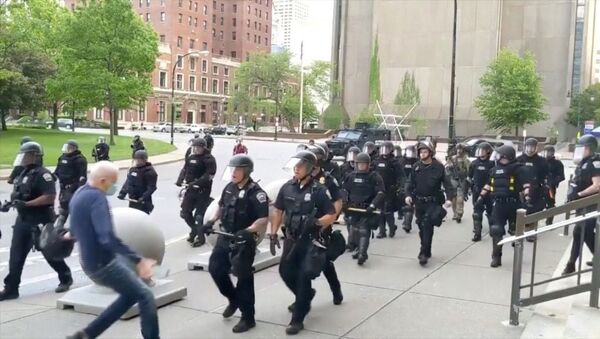Lawyer T. Greg Doucette and mathematician Jason Miller have formed a publicly accessible database in Google Sheets of video recording instances of police brutality towards protesters and everyday persons. The list has hundreds upon hundreds of entries, many of which come from the nationwide clashes between police and protesters demanding justice for George Floyd, a black man who died in police custody last month in Minneapolis, Minnesota, as well as other victims of police violence.
However, the list also contains examples of recorded police violence against individuals, such as that which captured the final moments of Floyd’s life as four Minneapolis police officers tackled him and one pressed his knee against Floyd’s neck for nearly nine minutes as he said “I can’t breathe.”
It’s not uncommon for these kinds of videos to go viral on social media, but Miller told Vice that since Twitter is a private media company, they have “ultimate control of the information that’s shared on their platform,” so it was important that the records of police violence be stored elsewhere. Miller and Doucette had initially begun compiling the list as a Twitter thread, before it became unwieldy.
The database also provides a way to compile and spread the videos further, since the periodic appearance of particularly effective videos can give a false impression of the rarity of such events.
Technology and security analyst Patricia Gorky told Radio Sputnik’s Loud and Clear Monday that “information is powerful. Information is power. Information changes people.”
“This is a really amazing initiative that was initiated by a few individuals just creating a public online spreadsheet of police violence videos,” Gorky said. “This movement for justice was sparked by the video that was released, and this video footage really categorically showing the casual cruelness of the police department.”
Some examples given by Gorky of the list’s contents include police tossing a tear gas canister at a CBS news crew, police arresting someone for jaywalking and police arresting children. However, Gorky cautioned this was “a tiny amount of the police terror that’s happened throughout the years.”
“It’s not just about George Floyd; this is about 400 years of racial and racist oppression, racial violence,” Gorky said, noting the list reminded her of the book “100 Years of Lynchings,’” compiled in 1962 by American publisher Ralph Ginzburg of news clippings and stories of the murders of black people going back to the 1880s, “showing the shocking brutality that was continuing.”
“This is not a new phenomenon,” Gorky noted, “it’s just that now we have video.”



